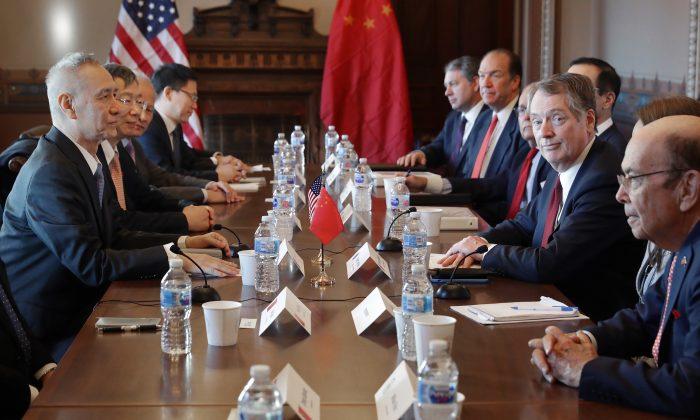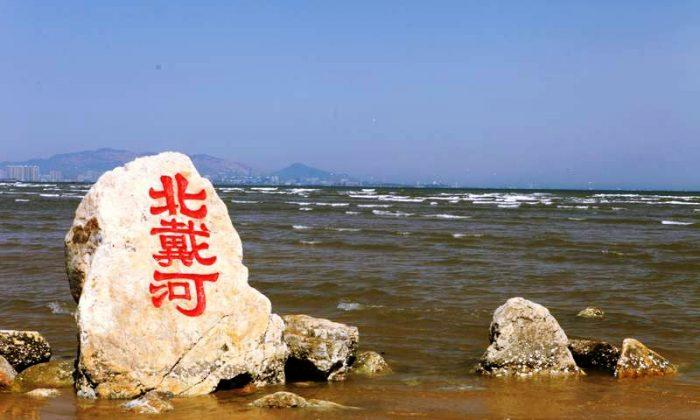The United States and China both announced on Dec. 13 that the two countries had reached a “phase one” trade agreement.
According to the announcement by the United States, the tariffs that were set to start on Dec. 15 will be cancelled, and some existing tariffs will be reduced. The agreement requires the Chinese regime to carry out structural reforms to protect intellectual property, stop coercive technology transfers, and open its market for agricultural products and financial services. China also promised to buy more U.S. goods and services in the coming years.
In particular, the U.S. statement emphasized that the agreement has an enforceable mechanism.
China’s announcement at a press conference focused on “equality;” that is, both sides have made concessions and China has won the initiative to a certain degree. However, it downplayed the two most important parts emphasized by the United States—the requirement for structural reforms and the enforceable mechanism.
Needless to say, the Chinese authorities’ target audience are the Chinese people living in mainland China.
After both sides made their announcements, there have been two opposite responses.
One group believes that the Trump administration once again fell into the trap set by the Chinese Communist Party (CCP) that always tries to drag things out indefinitely to gain possible favorable opportunities. Therefore, these people think Washington failed to seize the opportunity to hammer China until the CCP is completely defeated.
Among this group, there are two types of people.
One is U.S. Democrats. For example, Senate Minority Leader Chuck Schumer said in his Twitter post on Dec. 13: “President Trump has sold out for a temporary and unreliable promise from China to purchase some soybeans.”
The other is Chinese pro-democracy activists. They hope that President Trump will take the toughest measures against the CCP, as they believe that any negotiation with the CCP is a compromise.
However, in my opinion, overall, China is the one that made more compromises in the phase one trade agreement, and based on the end result, the United States has more gains than losses.
Many previous negotiations between the two countries ended in failure as Beijing has always broken its promises during the last stage, owing to two major reasons. First, the CCP tried to drag things out, hoping that at a certain point some favorable change might appear. The second reason is that this time the opponent is Present Trump, who is very different from the CCP’s previous opponents that could easily be deceived and tricked. All the previous negotiations and agreements between the CCP and the World Trade Organization (WTO) actually fall into this category.
The requirement for structural reform and an enforceable mechanism indicate that Washington may resume imposing penalty tariffs against China at any time if it fails to fulfill the agreements.
Therefore, the United States does not suffer much loss from this round of negotiations. Although tariffs on some Chinese goods have been reduced, that is a normal outcome, as negotiation itself is an art of compromise. Reaching a phase one deal will help to ease the pressure on exporters in both countries. It will be beneficial for the U.S. economy, as well as for Trump’s 2020 presidential campaign.
However, Washington needs to stay alert—in the event China breaks its promises, the United States must be prepared to take effective countermeasures immediately.
As for the Chinese communist regime, the phase one agreement is actually a step backwards, but it had no other choice. The trade war that had lasted for more than a year has caused a huge impact on China’s economy—foreign capital is leaving China, a large number of companies have gone bankrupt, soaring unemployment, a financial crisis, inflation, and public outrage. All these are signs suggesting huge difficulties ahead and a doomsday scenario for the current regime. Many Chinese communist officials are seeing the writing on the wall and have rushed to transfer their assets overseas, preparing to leave the country at anytime.
Internationally, the Chinese communist regime is becoming more and more isolated—the most prominent signal being NATO for the first time recognizing China as a threat during its summit meeting in London in early December.
It was amidst international and domestic crises that the CCP was forced to retreat and agree to sign the phase one agreement. Although we are not optimistic that the CCP will stick to the terms, the agreement nonetheless has the CCP in a stranglehold, as the Trump administration can impose penalty tariffs at any time.
Actually, even without a U.S.-China trade war, the CCP will still face its final total collapse. Its crimes and bad deeds of the past 70 years have caused huge social problems and unresolvable conflicts between the regime and the Chinese people. The trade war is merely a catalyst that expedites the process of disintegrating the CCP.




